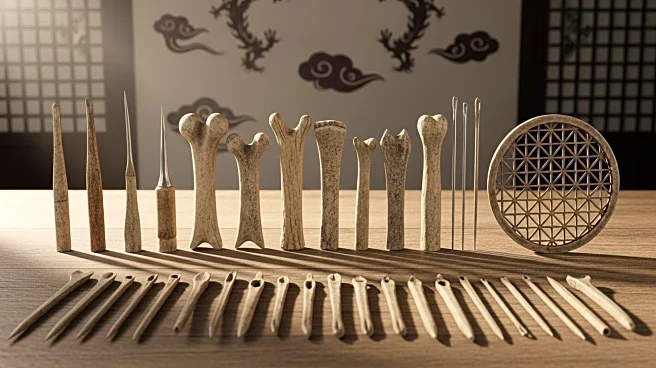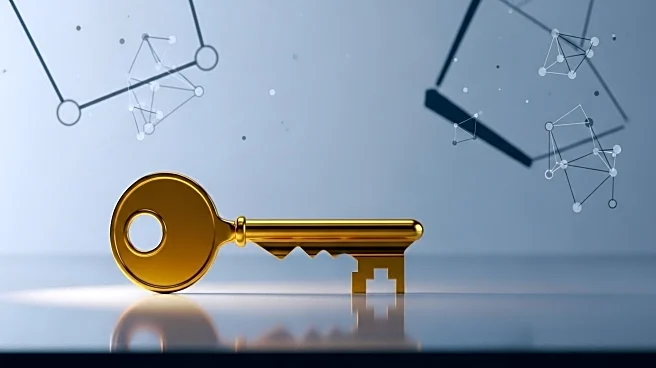What is the story about?
What's Happening?
A recent study led by Dr. Sawada and published in Scientific Reports has uncovered evidence of systematic human bone modification within the Neolithic Liangzhu culture in China. The research involved the examination of 183 human bones, of which 52 were identified as worked bones. These findings are significant as they represent the first known instance of human bone modification in Neolithic China. The Liangzhu culture, which thrived approximately 5,300 to 4,500 years ago in the Yangzi River Delta, was characterized by large urban societies with complex social structures. The modified bones, often found discarded in canals and moats, include skull cups, mask-like facial skulls, and limb bones with working traces. The study suggests that these bones were not obtained through violence but were likely collected after decomposition, indicating a standardized production process.
Why It's Important?
The discovery of worked human bones in the Liangzhu culture provides insight into the social and cultural dynamics of one of China's earliest urban societies. The lack of cutmarks and signs of violence suggests a unique treatment of the dead, possibly reflecting changes in social bonds and kinship due to urbanization. This practice contrasts with earlier periods where smaller communities interred their dead in formal burial contexts. The findings highlight how urbanization may have transformed perceptions of death and the dead, particularly those outside immediate kinship networks. The study contributes to understanding the evolution of social structures and cultural practices in ancient China, offering a glimpse into how large-scale societies managed relationships with the deceased.
What's Next?
Further research may explore the broader implications of these findings on the understanding of social stratification and cultural practices in ancient urban societies. Archaeologists and anthropologists might investigate similar practices in other Neolithic cultures to determine if this phenomenon was unique to the Liangzhu or part of a wider trend. Additionally, the study opens avenues for exploring the role of urbanization in shaping cultural and social norms, particularly in relation to death and ancestor worship. Future studies could also focus on the technological aspects of bone modification and its significance within the Liangzhu culture.
Beyond the Headlines
The study raises ethical and cultural questions about the treatment of human remains in ancient societies. It challenges modern perceptions of death and burial practices, prompting reflection on how cultural norms evolve with societal changes. The findings may also influence contemporary discussions on the preservation and study of human remains, emphasizing the need for respectful and culturally sensitive approaches in archaeology.
AI Generated Content
Do you find this article useful?













